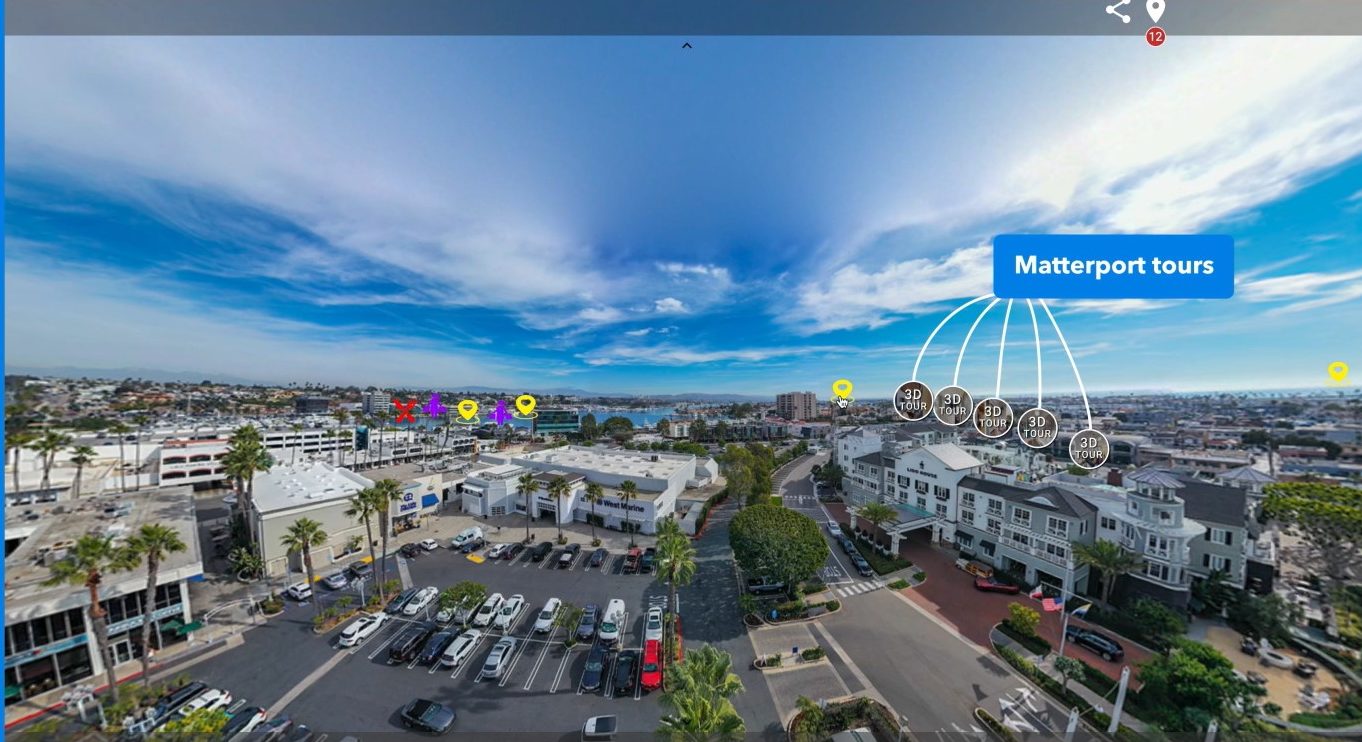panoramic stitching software
Panoramic Stitching Software: A Complete Guide for Photographers and Real Estate Professionals
I. Introduction
Panoramic stitching software has become a must-have tool for photographers, real estate agents, and anyone involved in virtual tour creation. This software merges multiple overlapping photos into a single wide-angle or 360-degree image. It allows you to capture scenes that are simply impossible with a single shot.
Whether you’re showcasing a luxury home or capturing a scenic landscape, panoramic stitching enhances your visuals. It makes your content more immersive. When paired with platforms like www.threesixty.tours, the results can be stunning. This helps you create interactive, high-resolution virtual tours that truly impress.
In this guide, we’ll break down how panoramic stitching works, what features to look for, and which software options are worth considering. We’ll also share practical tips to help you shoot and edit like a pro. Whether you’re just starting out or refining your workflow, this guide has you covered.
By the end, you’ll know how to choose the right software, avoid common mistakes, and create professional-grade panoramas. This will elevate your virtual tours and visual storytelling.
II. How Panoramic Stitching Works
Understanding how panoramic stitching works can help you capture better images and choose the right software.
- A. The Stitching Process Made Simple
- 1. Capturing Your Images
Start by taking a series of photos that cover the entire scene. Make sure each photo overlaps the next by around 30%. This overlap is crucial—it’s how the software knows where to “stitch” the images together. Using a tripod helps keep your shots aligned. For 360-degree virtual tours on www.threesixty.tours, a panoramic tripod head ensures consistency and reduces stitching errors. Once your images are ready, import them into the software. Most programs will either auto-detect the sequence or let you manually select the shots. - 2. Aligning and Blending
The software scans overlapping areas to find common features—like edges, textures, or colors. Then it aligns the photos and blends them into one seamless image. Advanced tools let you fine-tune the alignment manually. This is helpful when lighting varies or when there are moving objects in the scene. - B. The Technology Behind the Scenes
- 1. Feature Detection and Matching
The software uses algorithms like SIFT (Scale-Invariant Feature Transform) and RANSAC (Random Sample Consensus) to detect and match features between images. These tools help align images even if they were taken from slightly different angles. - 2. Automatic vs. Manual Stitching
Many programs offer automatic stitching, which is great for beginners or fast workflows. Others provide manual controls, giving you more precision. For real estate agents using www.threesixty.tours, automatic tools can speed up tour creation. Photographers may prefer manual options for more artistic control.
III. Key Features to Look For
Not all stitching software is created equal. Here are the key features you should look for when choosing a tool.
- A. User-Friendly Interface
A clean, intuitive interface can save you hours of frustration. Look for drag-and-drop functionality, guided workflows, and clear navigation. If you’re a real estate agent creating virtual tours on www.threesixty.tours, ease of use is essential for quick turnarounds. - B. Built-In Editing Tools
Good stitching software should include:- Exposure and color correction
- Lens distortion adjustments
- Horizon leveling
- Ghost removal for moving subjects
- Cropping and rotation
Having these tools built-in means less time jumping between programs like Photoshop or Lightroom.
- C. High-Resolution Output
Virtual tours need to look sharp—especially when viewed in fullscreen or VR. Choose software that allows for high-resolution exports and supports wide aspect ratios. Exporting in optimized formats (like JPEG or PNG) ensures fast load times on platforms like www.threesixty.tours. - D. File Format Compatibility
Your software should support a wide range of image formats, including RAW, TIFF, and JPEG. RAW support is especially important for photographers who want maximum image quality and editing flexibility. - E. VR and 3D Support
If you’re creating immersive experiences, look for software that supports VR and 3D formats like equirectangular projection. Some tools even let you export directly to VR headsets or integrate with 3D modeling platforms.
IV. Top Panoramic Stitching Software Options
With so many tools available, it helps to know which ones stand out.
- A. Overview of Popular Software
- 1. PTGui
PTGui is a professional-grade tool known for its speed and precision. It supports both automatic and manual stitching, making it ideal for serious photographers and virtual tour creators. - 2. Hugin
Hugin is a free, open-source tool packed with features. It has a steeper learning curve but offers great flexibility for those willing to invest the time. - 3. Adobe Photoshop
Photoshop’s Photomerge feature is a simple way to create panoramas. It’s best for users already familiar with Adobe products who need basic stitching capabilities. - 4. AutoPano
Though no longer officially supported, AutoPano is still used by many for its automation and batch processing. It’s user-friendly and was once a favorite among professionals. - 5. Affinity Photo
A budget-friendly alternative to Photoshop, Affinity Photo includes a solid panorama stitching tool. It’s great for casual users who want decent results without a subscription. - B. Feature and Pricing Comparison
- C. Pros and Cons
- PTGui:
Pros – High precision, VR support, fast rendering
Cons – Expensive, steeper learning curve - Hugin:
Pros – Free, highly customizable
Cons – Less intuitive interface - Photoshop:
Pros – Easy to use, integrates with Adobe suite
Cons – Limited control, no VR support - AutoPano:
Pros – Automation, batch processing
Cons – No longer supported, potential compatibility issues - Affinity Photo:
Pros – Affordable, good for basic needs
Cons – Limited features, no VR support
| Software | Price | Auto Stitching | Manual Controls | VR Support | Ease of Use |
|---|---|---|---|---|---|
| PTGui | $149–$299 | Yes | Yes | Yes | Moderate |
| Hugin | Free | Yes | Yes | Limited | Moderate |
| Photoshop | $20.99/month | Yes | Limited | No | Easy |
| AutoPano | Discontinued | Yes | Yes | Yes | Easy |
| Affinity | $69.99 (one-time) | Yes | Limited | No | Easy |
For users of www.threesixty.tours, PTGui and Hugin are top choices due to their VR capabilities and precision.
V. Best Practices for Capturing and Editing Panoramas
Even the best software can’t fix poorly captured images. Here’s how to get it right from the start.
- A. Image Capture Tips
- 1. Use a Tripod
A tripod helps keep your shots steady and aligned. A panoramic head further reduces parallax errors, especially for 360-degree scenes. - 2. Lock Your Settings
Shoot in manual mode to keep exposure, white balance, and focus consistent across all images. This makes stitching much smoother. - 3. Overlap by 30%
Make sure each image overlaps the next by at least 30%. This gives the software enough data to align them accurately. - 4. Level the Camera
Use a bubble level or grid lines to keep your shots straight. This prevents distortion and saves time in post-processing. - B. Editing and Post-Processing
- 1. Fix Lens Distortion
Wide-angle lenses can cause distortion. Use built-in lens correction tools to fix this before stitching. - 2. Remove Ghosting
Ghosting happens when moving objects appear in multiple frames. Use ghost removal tools or manually retouch these areas. - 3. Optimize for Web
Use tools like JPEGmini or TinyPNG to compress images without losing quality. This ensures fast loading on www.threesixty.tours. - C. Common Mistakes to Avoid
- Changing Lighting Conditions: Avoid shooting during sunrise or sunset when light changes quickly. It can cause uneven exposure across images.
- Moving Subjects: Try to capture scenes with minimal movement. People, cars, or pets can confuse the stitching software.
- Auto Settings: Avoid auto exposure or white balance. They can cause inconsistencies between frames.
VI. Real-World Applications and Benefits
Panoramic stitching isn’t just for scenic photography. It has real-world benefits for various industries.
- A. Real Estate Marketing
Virtual tours are now a must-have in real estate. Using panoramic images in platforms like www.threesixty.tours helps potential buyers explore properties remotely and in detail. - B. Travel and Hospitality
Hotels, resorts, and travel agencies use panoramas to showcase rooms, amenities, and destinations. It builds trust and enhances bookings. - C. Architecture and Interior Design
Panoramas help architects and designers present their work in context. Clients can “walk through” a space before it’s even built. - D. Journalism and Storytelling
Panoramic images can add depth to news stories or documentaries, offering immersive perspectives that draw viewers in.
To see how panoramic imagery is transforming industries, check out this in-depth article from PetaPixel on the rise of 360-degree photography and its impact on storytelling.
VII. The Future of Panoramic Stitching
Technology is moving fast, and panoramic stitching is evolving with it.
- A. AI and Automation
New software uses AI to detect features, align images, and even correct errors automatically. This makes stitching faster and more accurate. - B. VR and AR Integration
As virtual and augmented reality grow, panoramic images will play a larger role in immersive experiences. Expect more tools to support direct export to VR platforms. - C. Mobile Apps
Smartphones are getting better at stitching panoramas on the go. While not as powerful as desktop tools, they’re great for quick previews or social media sharing. - D. Cloud-Based Editing
Cloud platforms are emerging that let you stitch and edit panoramas online—no downloads required. This is perfect for collaborative projects or quick edits on the fly.
VIII. Conclusion
Panoramic stitching software is more than just a tech tool—it’s a creative and commercial game-changer. Whether you’re a photographer capturing majestic landscapes or a real estate agent building virtual tours on www.threesixty.tours, mastering this skill will set you apart.
We’ve covered how stitching works, what features to look for, and which software options offer the best value. We’ve also shared best practices to help you capture and edit like a pro.
The future looks bright. With AI, VR, and mobile tools evolving rapidly, panoramic stitching will only become more powerful and accessible. Start experimenting today—and bring your virtual tours to life on www.threesixty.tours.
For more insights on the technology behind panoramic imaging, explore this article from TechRadar that reviews the top photo editing tools and trends shaping the future of photography. Whether you’re aiming for artistic excellence or commercial success, panoramic stitching is your ticket to creating immersive, unforgettable visual experiences.


